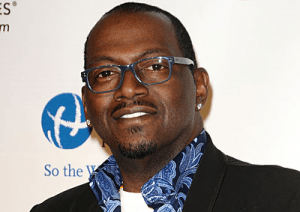
/
RSS Feed
Como estudiantes de viaje que aprenden sobre el idioma español y sus diferentes variedades étnicas, nos estamos desviando por el hermoso Puerto Rico. Con nuestro invitado, Wilzave Quiles Guzmán, aprenderemos sobre las atracciones turísticas populares y las tendencias del español puertorriqueño desde la perspectiva de una nativa. Durante nuestra discusión, nos tomaremos el tiempo para investigar y escuchar la aspiración de la /s/ y la elisión de la /d/ de nuestro hablante invitado. Al igual que muchos otros grupos de habla hispana, Puerto Rico tiene su propia versión del idioma español. Con la aspiración de la /s/, palabras como “basta” y “vamos” se convierten en “bahta” y “bamoh”. Similar a la aspiración de la /s/, tenemos también la elisión de la /d/, en que palabras como “empanadillas” y “cansado” se pronuncian como “empanaíllas” y “cansao”. ¡Únanse a este episodio para aprender lo que hay que saber antes de visitar la isla!
Referencias
Chávez, A. C. (2019, August 11). Understanding Puerto Rican Spanish. Spanish and Go. https://spanishandgo.com/learn/puerto-rican-spanish
Lipski, J. M. (2014). El español de América (S. Iglesias Recuero, Trans.). Cátedra.
Morgan, T. A. (2010). Sonidos en contexto: Una introducción a la fonética del español con especial referencia a la vida real. Yale University Press.
Soothing Sounds. (2021, February 6). Spanish beach bar ambience. https://www.youtube.com/watch?v=SNmw2pVTpbs



24 comments
Camila Justus
Hola Kalyssa y Stephanie! Disfrute mucho su podcast. Se me hizo interesante que letras completamente diferentes, /s/ y /d/ suenen igual. Eso si es algo que nunca le habia dado mucha importancia. Muchas veces si escucho que alguien hable diferente, pero nunca trato de averiguar cuales letras pronuncian diferente. Muchas gracias!
Jose Ignacio Guerrero Donoso
Hola Kalyssa y Stephanie,
Me gusto como pudieron distinguir entre dos acentos de dos diferentes paises. Pero más importante, me gusto como lo pudieron explicarlo paso-a-paso, y con bastantes detalles. El podcast de ustedes no solo fue muy interesante, pero tambíen muy academico, porque me enseño algo que yo antes no sabía.
Zitlali Aguirre
Me parece increíble las diferentes formas de hablar en español, especialmente en Puerto Rico. No es el acento, sino los fonemas los que marcan una gran diferencia al hablar verbalmente. Tengo una amiga que es de Puerto Rico, pero no hablo nada de español con ella. ¡Después de escuchar este podcast, me gustaría poder hablar más con ella en español!
Amanda Uribe
Hola Kalyssa and Stephanie,
Bien hecho! Me gusta la conversacion sobre conversacion con los nativos de Puerto Rico en formas especificas. La classe de foneticas enfoca en los sonidos pero, tus podcast tienen mas informacion sobre comunicacion. Es intresante porque la elision de la /d/ is comun in differentes culturas y regiones!
Isabella De Paolo
Hola Kalyssa y Stephanie. Que episodio tan creativo y elaborado. El “viaje” fue una forma muy buena para introducir los temas e ideas que también era original y divertido. Hicieron un muy bien trabajo en explicando el español de Puerto Rico que se me hizo más fácil ver las diferencias en el español que hablamos en Mexico/EEUU. Muy bien trabajo.
Eloy Cruz
Los Boricuas son muy interesantes cuando hablan. Este podcast muy similar al podcast que Kristy y yo hicimos sobre la aspiraciones de la s. Me fascina tanto estudiar cómo hablan los nativos del Caribe. Aunque sean de la misma region, aun hay diferencias entre los tres países dominantes del español. Muy buen trabajo muchacha.
Priscilla Vargas
La entrevista fue con una estudiante de St Marys que es originalmente de Puerto Rico. Aprendemos que lugar es el mas romantico en Puerto Rico segun la estudiante (su nombre no entendi). La recomendacion fue algo cerca de la agua, una cabana o algo por barco. Tambien aprendemos que el “s” se pronuncia diferente en Mexico versos Puerto Rico y el “d” no se oye, estos dos son un reduccion de sonido. Con esta informacion entendemos lo basico para visitar y comunicar en Puerto Rico.
Samantha Bonillas
¡Increíble! Me encanto el tema del episodio y la energía. En este episodio, aprendí el tipo de español que se habla en Puerto Rico. También aprendí la diferencia de la pronunciación de s/y/d. ¡Muchísimas gracias por este episodio!
Carlos Cenoz
¡Hola Kalyssa y Stephanie! Me encanto el pod cast y el tema que escogieron fue muy interesante. Me ayudo a reconocer la diferencias de como se pronuncian /s/ y /d/. Me sorprende las diferencias lingüísticas entre diferentes culturas. ¡Muy buen trabajo!
JoAnna Mendez
¡Hola Kalyssa y Stephanie! ¡Muy buen trabajo! Me encanto como le dieron un task a la participante que no le daría ninguna idea de lo que están buscando. Tuvieron una conversación normal, pero encontraron una forma de meter como ase la elisión de la /d/ y como aspira la /s/. ¡¡¡Muchas gracias por prepararme para ir a Puerto Rico!!!